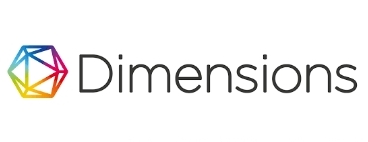STRATEGI OPTIMALISASI PELAKSANAAN PROGRAM RUJUK BALIK PASIEN DIABETES MELITUS PESERTA BPJS KESEHATAN DI PUSKESMAS KECAMATAN PANCORAN
Abstract
Background: The Back-Referral Program for Diabetes Mellitus (DM) patients in the health system in Indonesia demands the role of the Community Health Center in its implementation. The Pancoran Community Health Center seeks to answer the need for Referral Program by innovating service development in the form of an optimization strategy for Referral Program implementation, including increasing Prolanis participants and taking Referral Program prescriptions through clinical teleconsultation. Various factors influencing the success of the Referral Program, including the effectiveness of the innovations implemented, have not yet been evaluated in depth.
Objective: Exploring the factors influencing the continuity of Back-Referral Program patient visits and evaluating strategies for optimizing Back-Referral Program implementation at the Pancoran Community Health Center.
Methods: The research design used is Mixed-Method, sequential explanatory. The research was conducted at the Pancoran Community Health Center, with quantitative research subjects being DM patients who visited to take referral program prescriptions for 2020-2021, with as many as 69 people. The qualitative research subjects were ten patients registered as back-referral program participants in 2021-March 2022, chosen by a purposive sampling technique. In the quantitative study, secondary data were taken from medical records and analyzed in a simple descriptive manner using statistical analysis software. Qualitative research conducted indepth interviews, analyzed through coding, and interpreted descriptively.
Results: There is no relationship between increasing the continuity of the Back-Referral Program 2020-2021 and Prolanis participation or taking Back-Referral Program prescriptions through clinical teleconsultation. The increase in the continuity of Back-Referral Program patient visits was not related to the characteristics of the patient’s gender, age, domicile, educational level, and occupation. There are supporting and inhibiting factors in the implementation of The Back-Referral Program. Such as the level of satisfaction of patients consulting general practitioners, staff hospitality, easy access to services and information, patient-staff communication, infrastructure, drug availability, family and work support, budget flexibility, waiting time, and health conditions patient.
Conclusion: The increase in the continuity of DM patient visits taking Back-Referral Program prescriptions in 2020-2021 is not significantly related to optimization strategies and variations in patient characteristics. Based on patient perceptions, supporting and inhibiting factors for Back-Referral Program implementation were identified. Comprehensive steps are needed to optimize Back-Referral Program in the short, medium, and long-term stages, including the potential for using new programs based on patient perception.
Copyright (c) 2022 Tita Meitia Dianingsih, Adi Utarini, Haryo Bismantara

This work is licensed under a Creative Commons Attribution-NonCommercial-ShareAlike 4.0 International License.




